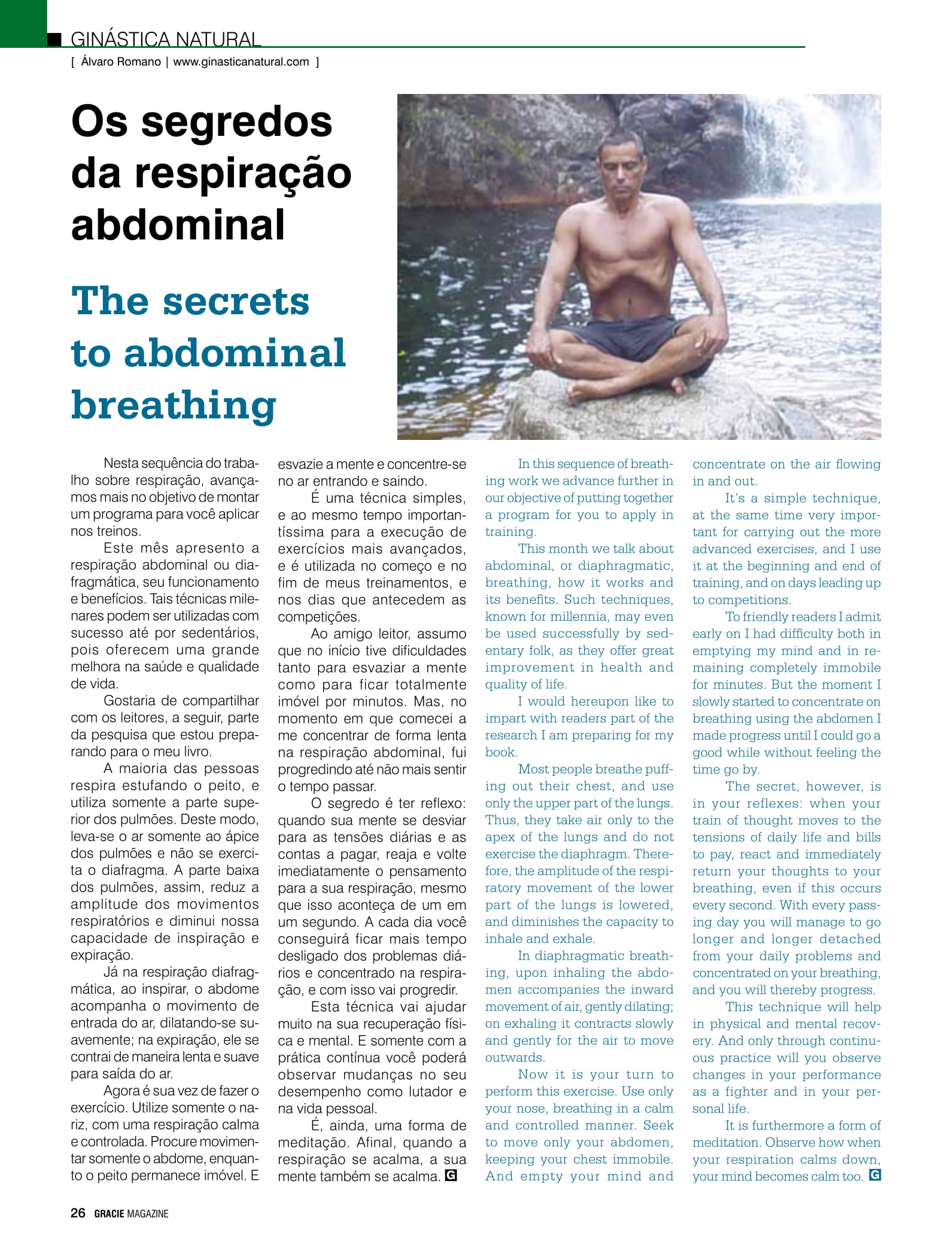[First published in 2009.]

By Álvaro Romano
In this sequence of breathing work we advance further in
our objective of putting together
a program for you to apply in
training.
This month we talk about
abdominal, or diaphragmatic,
breathing, how it works and
its benefits. Such techniques,
known for millennia, may even
be used successfully by sedentary folk, as they offer great
improvement in health and
quality of life.
I would hereupon like to
impart with readers part of the
research I am preparing for my
book.
Most people breathe puffing out their chest, and use
only the upper part of the lungs.
Thus, they take air only to the
apex of the lungs and do not
exercise the diaphragm. Therefore, the amplitude of the respiratory movement of the lower
part of the lungs is lowered,
and diminishes the capacity to
inhale and exhale.
In diaphragmatic breathing, upon inhaling the abdomen accompanies the inward
movement of air, gently dilating;
on exhaling it contracts slowly
and gently for the air to move
outwards.
Now it is your turn to
perform this exercise. Use only
your nose, breathing in a calm
and controlled manner. Seek
to move only your abdomen,
keeping your chest immobile.
And empty your mind and
concentrate on the air flowing
in and out.
It’s a simple technique,
at the same time very important for carrying out the more
advanced exercises, and I use
it at the beginning and end of
training, and on days leading up
to competitions.
To friendly readers I admit
early on I had difficulty both in
emptying my mind and in remaining completely immobile
for minutes. But the moment I
slowly started to concentrate on
breathing using the abdomen I
made progress until I could go a
good while without feeling the
time go by.
The secret, however, is
in your reflexes: when your
train of thought moves to the
tensions of daily life and bills
to pay, react and immediately
return your thoughts to your
breathing, even if this occurs
every second. With every passing day you will manage to go
longer and longer detached
from your daily problems and
concentrated on your breathing,
and you will thereby progress.
This technique will help
in physical and mental recovery. And only through continuous practice will you observe
changes in your performance
as a fighter and in your personal life.
It is furthermore a form of
meditation. Observe how when
your respiration calms down,
your mind becomes calm too.
